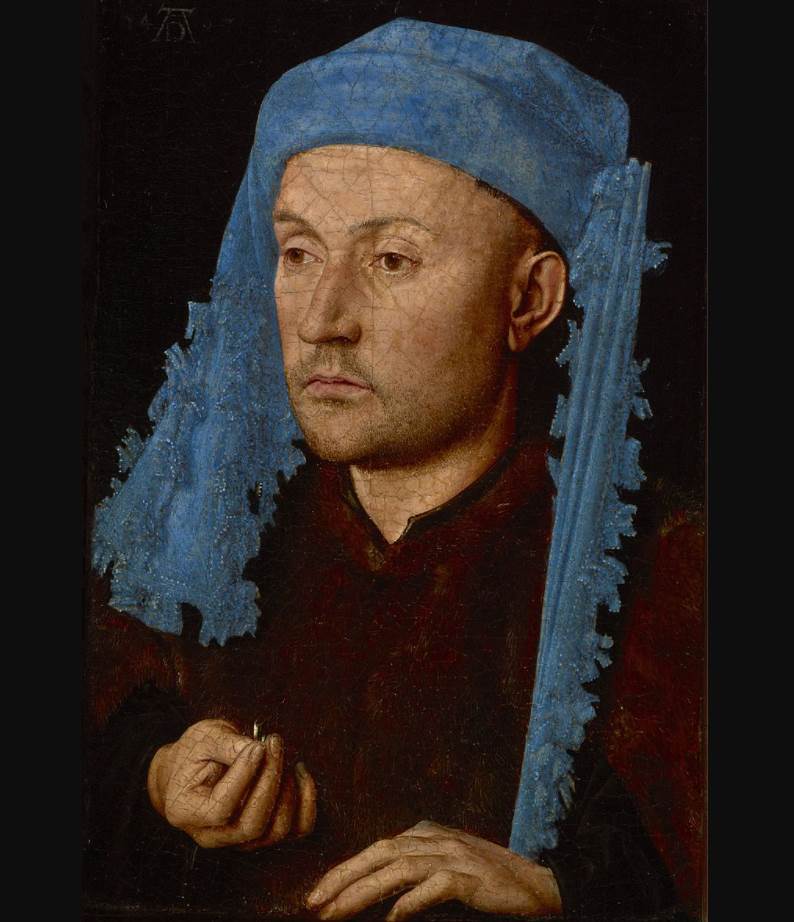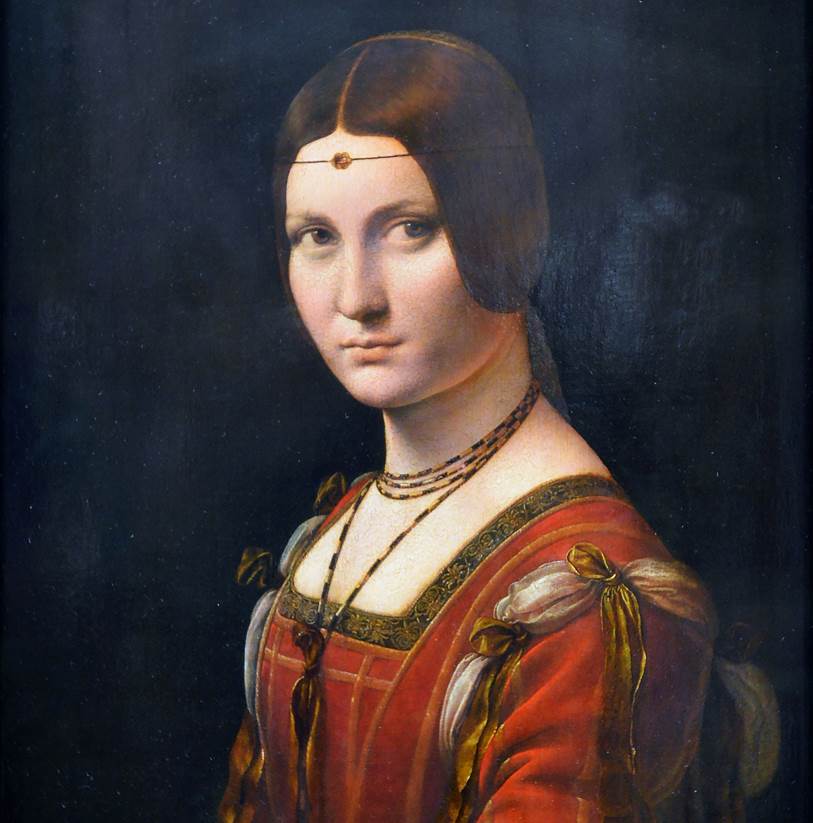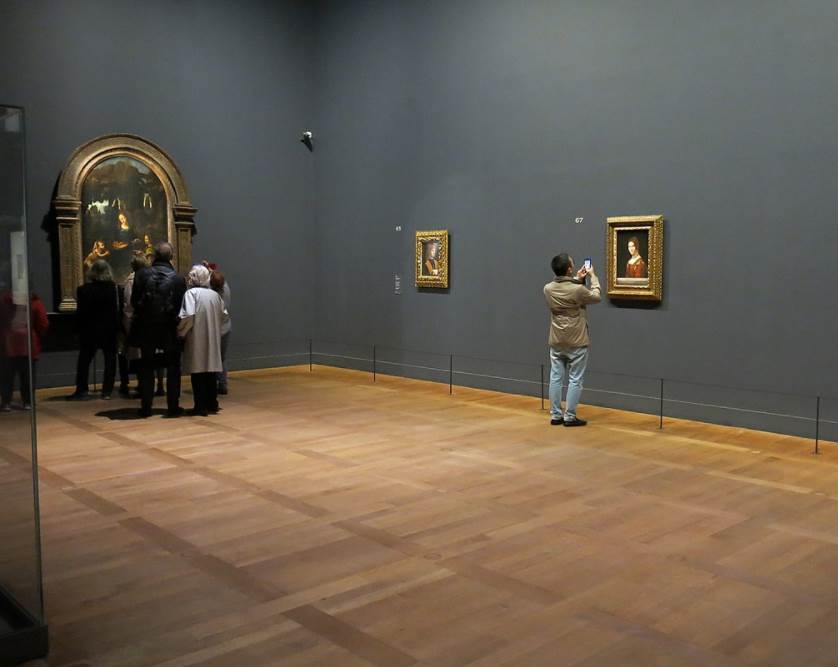Italian polymath and ultimate master of the Renaissance period Leonardo da Vinci (1452-1519) didn’t leave behind a whole lot of amazing artworks for us to admire, but the ones he did clearly show the incredible talent of the man.
One of these depicts a man holding a note which makes us assume he was a musician, but that’s not the only thing that makes this a unique work in the oeuvre of da Vinci.
Let’s take a closer look at some of the most interesting facts about Portrait of a Musician by Leonardo da Vinci, an amazing masterpiece of the Renaissance.
1. It was painted while da Vinci was in his early thirties
Leonardo da Vince became a master at the Guild of Saint Luke in the year 1472 when he was just 20 years old. Before he had been an apprentice at the studio of Florentine artists Andrea del Verrocchio.
He spent about a decade in Florence between 1472 and 1482, the capital of the Tuscany region in Italy and the birthplace of the Renaissance.
His incredible talent allowed him to earn quite a few commissions during this early phase of his career as well, including a prestigious commission for the chapel of the Palazzo Vecchio in the heart of the city.
He moved to Milan in 1482 and started working for the Duke of Milan, a man named Ludovico Sforza, and stayed in the city until 1499. It’s here that he created one of his ultimate masterpieces, the Last Supper Painting on the wall of the rectory of the convent at Santa Maria delle Grazie.
The Portrait of a Musician was presumably produced during the first couple of years of his time in Milan, and although the exact date remains unknown, most art historians place it between 1483 and 1487.

2. The words on the sheet of paper are illegible except for a few letters
So how do we know that the depicted man is a musician?
In the bottom right corner, we can see that the man is holding a sheet of paper featuring musical notes. Adding this is a subtle indication as to what the profession of the man was.
Unfortunately, the letters have become illegible over time. We can only make up letters that might read “Cant” and “An.” Art historians haven’t come to a definitive conclusion as these might mean either “Cantum Angelicum,” Latin for “Angelic Song,” or “Cantore Angelico,” Italian for Angelic Singer.”

3. It was a revolutionary painting upon completion in Milan
Art lovers in Milan weren’t as open-minded compared to other cities in Italy in the late 15th-century, and especially not compared to the people in Florence. The angle in which the musician was portrayed must have come as a shock to people of Milan who were only used to seeing portraits in profile.
It appears that da Vinci got inspiration from Early Netherlandish works such as the paintings of Jan van Eyck. Portrait of a Man with a Blue Chaperone serves as a great example as it also features a black background.

4. It’s the only portrait of a man that da Vinci ever painted
At least, the only portrait of a man that we know of.
He also painted other portraits during his period in Milan such as the Portrait of Ginevra de Benci, La Belle Ferronnière, and Lady with an Ermine, both depicting omen. His most famous work, the Mona Lisa painting, also depicts a woman.
The Portrait of a Musician is not only unique because it depicts a man, but also because his face and body both point in the same direction.

5. The painting is actually unfinished
Leonardo da Vinci was prone to procrastination as his busy mind was jumping from solving one problem to another at an incredible speed. This also means that he didn’t complete all the paintings that he started.
This is true for the Mona Lisa painting and also for this portrait. Because of this, the shadow used by the artist is extremely harsh. The finished work would probably have multiple additional thin layers of oil to smoothen things out.

6. How big is the Portrait of a Musician?
What’s remarkable about Leonardo da Vinci is that he didn’t even complete the smallest paintings in his oeuvre. This particular work is pretty small as it only has dimensions of 44.7 × 32 centimeters (17.6 × 12.6 inches).
It was painted on a walnut wood panel and the artist probably used both oils and tempera.
7. It remains unknown until today who the musician actually was
Unfortunately, the identity of the sitter remains up for debate until today. Before restoration in the early 20th century, the sheet of paper wasn’t visible and it was assumed it was a portrait of Ludovico Sforza himself.
Initially, the leading candidate was the court musician of Sforza, a man named Franchinus Gaffurius (1451–1522). Since both men worked at the court of Duke and therefore knew each other, this became a very plausible theory.
Other candidates that have been suggested as the sitter are:
- Atalante Migliorotti (1466-1532) – A Tuscan musician and known friend of Leonardo.
- Josquin des Prez (1455-1521) – A French singer and composer who worked at the court at the time.
- Gaspar van Weerbeke (1445-1516) – A Netherlandish composer and singer who also worked at the court.

9. The attribution of the painting wasn’t always straight forward
The painting was first mentioned in an inventory that was established in the year 1672 by the Pinacoteca Ambrosiana in Milan. This means that nothing is known about the work before this date.
There is also no mention of a commission for the painting which probably means that it was one of the works that Leonardo intended to keep for himself, just like how he kept the Mona Lisa painting until he passed away.
The attribution to Leonardo has been up for debate since it first emerged in the 17th century, but is now undisputed based on artistic qualities.

10. It’s the only oil on panel painting by da Vinci that didn’t leave Milan
Although you can admire the Last Supper Painting by Leonardo in Milan (at least what’s left of it), the Portrait of a Musician is quite a remarkable work of art.
None of the oil on panel paintings that Leonardo painted during his period in Milan have remained in the city, except for this one. It has remained in the same place where it was first mentioned, the Pinacoteca Ambrosiana, a historic library in Milan.
This doesn’t mean that you can’t admire it elsewhere, though, because it has been exhibited in various other museums around the world, including the National Gallery in London (2011-2012) and the Louvre Museum in Paris (2019-2020).



